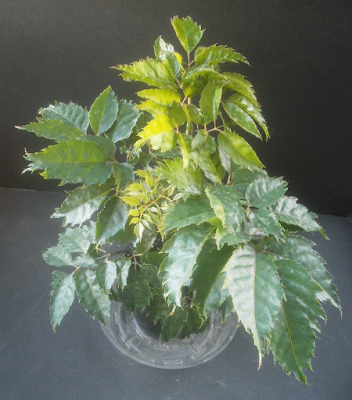This one is a little different.
I don't want one of my own, because orchids and I just do not get along at all.1 Even if we did, Mediocalcar decoratum is poorly-suited to living in the house. It's native to the cloud forests of Papua and New Guinea, which means lots of moisture and cool temperatures.
The flowers reminded me of Manettia luteorubra (candy corn plant or candy corn vine), which I occasionally see in stores around here, as an outdoor annual, which has blooms of similar size and coloration, though the shape on Manettia is long and tubular. I thought maybe the similarity could be explained by having a pollinator in common, but apparently not: though there seems to be a lot of confusion as to what species of Manettia it is, everybody agrees that Manettia is a New World family, and I doubt Manettia and Mediocalcar have the same pollinator, considering that they're separated by the whole Pacific Ocean.2
Much better photos of M. decoratum can be found here.
-
Had I held on to them for a few more months, I could probably have stuck them outside next summer and gotten blooms. And maybe I should have. But the reasoning was basically, 1) if they could bloom in the house for me, they would probably have done so already, 2) I've gotten no enjoyment from either of them for a few years now, 3) it looks like they're beginning to fall apart, and 4) I need the room for Schlumbergera seedlings.
So far, the only exceptions to the "orchids and I don't get along" rule are Phalaenopsis, which pretty much likes everybody (despite which it still only tolerates me), and Neofinetia falcata "Amami Furan," which actually seems to like me, and vice-versa.
2 Not that it still couldn't happen; both are believed to be pollinated by birds, and birds do get around. But there are probably not many species of bird living on opposite sides of the Pacific Ocean. Though I suppose there could be different species of bird from the same genus on opposite sides of the ocean, where both kinds of bird really like tiny, yellow-tipped orange blooms, in which case the Mediocalcar / Manettia resemblance could be an example of convergent evolution. I couldn't find a source that identified the species of bird responsible for pollination for either flower; it's possible that we don't actually know.
Of course, the whole thing could be coincidence, too. Only so many colors out there, and so many ways of arranging them: given enough species with flowers, some repetition is bound to happen.





























